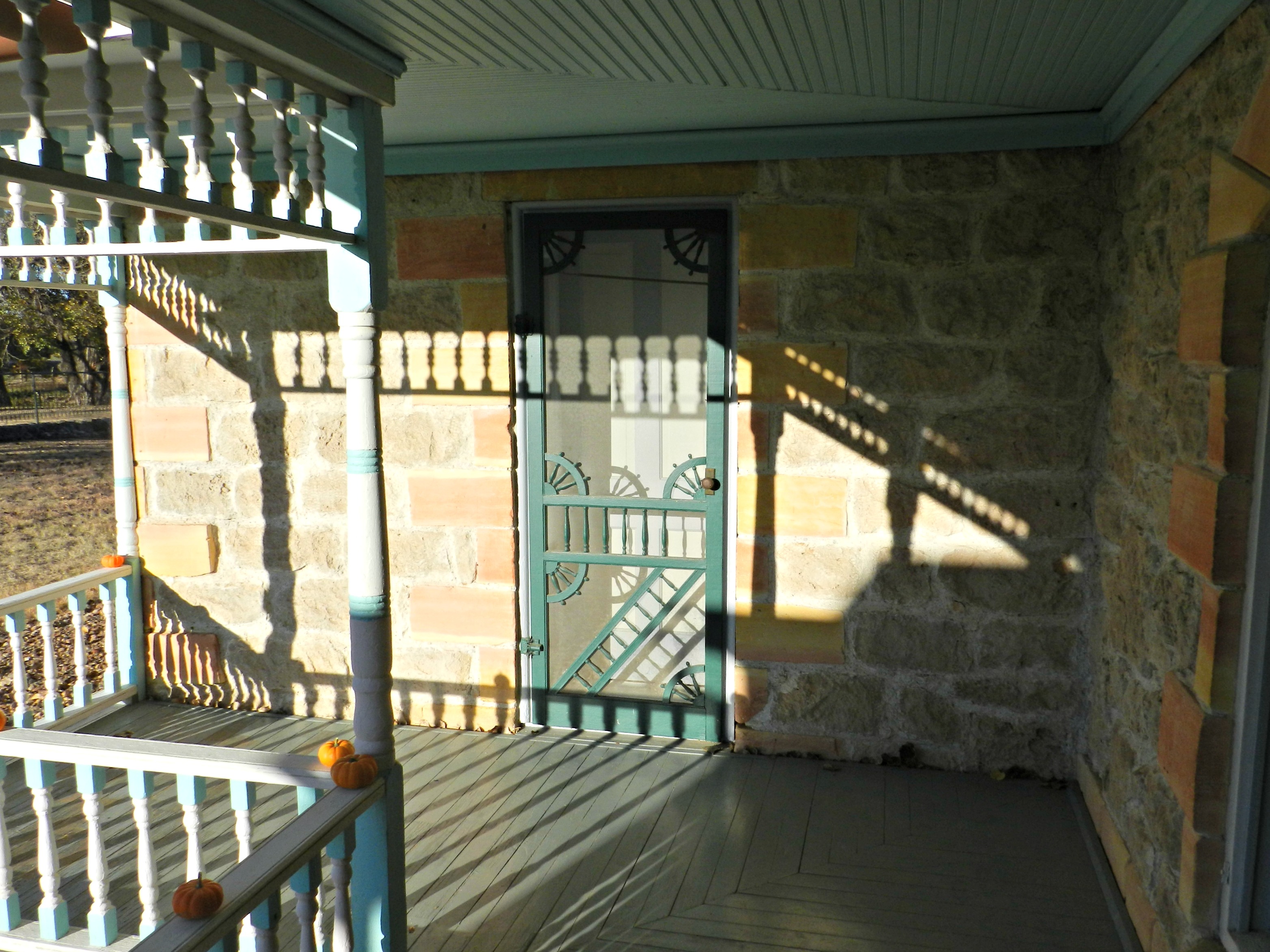
Learning more about how our ancestors lived fascinates me so I’m always up for any adventure that involves the past. A favorite place to explore old times is the nearby Cottonwood Ranch at Studley, Kansas. First, the architecture is interesting. However, the tales about it are better. The curator and his support team have skillfully preserved this English-style sheep ranch and its history. Fortunately, the original owner kept meticulous records that open windows into his world. In addition, the property caretaker is a great storyteller for those inclined to listen.
Walk around the house and outbuildings once, and you’ll have a dozen questions. Spin around again and multiply those by ten. A pressing question during one early fall visit was why was the porch ceiling blue?
Don Rowlison, long-term custodian and keeper of the past, had a ready answer. I should’ve expected this since I never ask anything about this place that he can’t explain, from the arrival of the residents to the unique architecture to–well—blue porches.
Expectantly, a group of us sat on that old-fashioned porch surrounded by Victorian gingerbread wood- work and waited for Don to tell us about the blue ceiling directly over our heads.
Interestingly, it had to do with insects, which, by the way, infest farm and ranch yards especially in late summer and fall. In particular, this had to do with flies and wasps, creatures that drive western Kansans crazy during these seasons. To prove it, we swatted some during our visit.
Apparently, Victorian era Americans believed that painting a porch ceiling blue reduced the number of flies and wasps invading favorite resting spots. Don explained that people of this time believed the color resembled the sky and, thus, confused flying irritants into thinking they couldn’t land and do their creepy crawly business.
After confirming Don’s explanation, I researched further and learned blue porch ceilings and even floors were, well, the bee’s knees to our late 1800 to early 1900 ancestors. New Englanders, or in this case, Englanders, were convinced the color blue deterred insects. Several writers agreed with Don’s explanation about the sky. However, others suggested a different reason for this belief. Victorian homeowners used milk paint, which has lye in it. They said this alkali functioned as an insecticide as well as a paint ingredient. Occupants increased its effectiveness by frequently repainting weathered porches.
My search offered an additional explanation–the haint blue story, which doesn’t fit the history of the ranch’s first occupants. However, it’s worth knowing because it explains the abundance of blue ceilings and floors in the South. Slaves believed the color blue kept spirits away. This belief transferred to the general population, becoming so ingrained that even today paint stores in that region sell haint blue.
Don’s and the researchers’ explanations interest me, but even more than these reasons for tinting a porch ceiling, I like relaxing under that hue. If that color prevents a bug or ghost from appearing, more power to it. If it doesn’t, it’s still good for my spirit. That’s a dandy reason to slap it on during a painting spree.
Native Kansan Karen Madorin is a local writer and retired teacher who loves sharing stories about places, people, critters, plants, food, and history of the High Plains.


